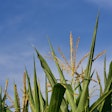
Producers across the U.S. and Canada can access advanced technology for marketing their grain more effectively and improving profitability when STRATUM, a new, first-of-its-kind digital platform, is introduced by GrainBridge in the first quarter of 2020.
Currently, farmers must rely on multiple applications and data points to track inputs, production and their marketing activities. Until now, there has been no single tool for efficiently storing and managing all this information.
“It can become overwhelming to attempt to organize and manage all of that information, especially from a marketing perspective,” said Faith Larson, GrainBridge chief strategy officer. “In contrast, STRATUM will enable farmers to conveniently consolidate information on production economics and grain marketing activities into a single digital platform, at no cost to them.”
With STRATUM, producers will be able to retrieve their respective agribusiness accounts so they can obtain location information, prices, grain contracts, and payment information, as well as enter into and manage grain contracts. The system currently includes more than 400 grain-buying locations, and Larson said GrainBridge is continuing to add more.
“Farmers are continually looking for ways to integrate technology into their operations, and the amount of information that they will be able to access with STRATUM is going to be powerful,” said Terry Chvatal, GrainBridge chief operations officer. “A farmer can check prices, pull their contracts and scale tickets, make sales, manage market risk and build and administer their planned budget, all without leaving STRATUM.”
He added that the platform will provide the right data farmers need to make the very best grain marketing decisions. “Farmers will have access to a dashboard of information about their own marketing performance but also highly aggregated, regionalized-based analysis,” Chvatal explained. “Historical performance, current values of unsold grain and impact analysis, among other key data points, will be accessible.”


















